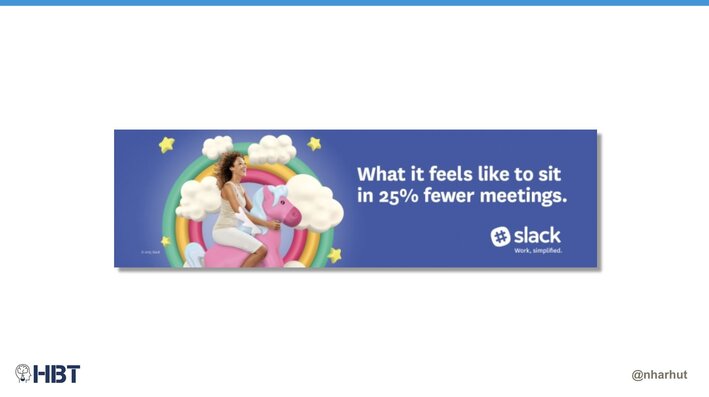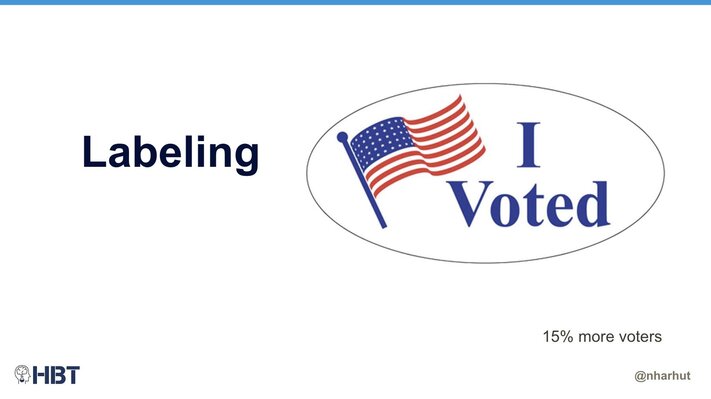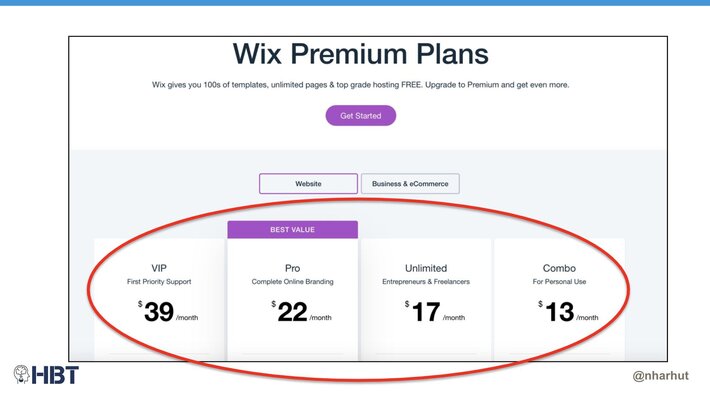9 Ways to Generate More Responses Using Behavioral Science

Kickstart 2024 by supercharging your email, content, and campaigns using behavioral science. Knowing your audience is one thing, but knowing your audience’s behaviors and how that can trigger action leading to more opens, reads, clicks, and conversions is another.
From her INBOUND 2023 session, “9 Ways to Generate More Response Using Behavioral Science,” Nancy Harhut (Co-Founder and Chief Creative Officer, HBT Marketing) drops some major gems when it comes to behavioral science and how to use it in your marketing campaigns.
Read on for a recap of her session and nine ways you can generate more responses.
1. LEVERAGE EMOTIONS
What really drives decisions? Emotions. As much as we all like to think that logic goes into decision making-processes, as Harhut explains, “it’s not about how we think, but how we feel.” Infuse your emails, ads, and content with emotionally-charged words and scenarios that resonate with your audience. Whether it’s something that tugs at their heartstrings, sparks joy, or elicits some other emotion; when people feel, they act.

[slide graphic courtesy of Nancy Harhut's presentation]
2. THE FOMO FACTOR IS REAL
People fear loss more than they desire gain. Instead of focusing only on the benefits in your messaging, hone in on what your audience stands to lose if they do not take your recommended action. What are some examples? Price increase campaigns, limited-time offers, exclusive memberships, and limited-stock items are all prime examples of how to use loss aversion tactics. It’s not about scheming, it’s about shifting perspectives to see things in a different way.
3. THE INFLUENCE OF OWNERSHIP
The idea of owning something can increase value perception. Position your message in a way that makes your audience feel personal attachment to your offering. Use terms like “Picture yourself…” or “Imagine if…” to crease that sense of ownership. Share introductory trials, emphasize unused credits or offers, or write copy in the second person to make customers feel as though they already own your product.

[slide graphic courtesy of Nancy Harhut's presentation]
6. THE EXPERT EFFECT
Expert opinions can help sway decisions. Include quotes, endorsements, and other forms of social proof from authority figures to double down on your messaging. Incorporate statistics and other supporting information from credible sources. Authority instills a sense of trust, and that trust can lead to more action. As Harhut notes, “people defer to experts.”
7. JUSTIFICATION LEADS TO ACTION
A compelling reason is essential for prompting action. How can you infuse this into your messaging? Add “because” in your propositions to help rationalize the action you’re asking of someone. The power of “because” or adding in the reason why can help prompt compliance when individuals have a clear reason to act.
8. FIRST IMPRESSIONS ARE MEANINGFUL
Individuals are more likely to be moved by the first piece of information they see. First impressions frame decisions and set expectations. Consider starting your email or copy with the most compelling offer you have or using that to anchor a high perceived value. When displaying subscription plans side-by-side, visually highlight the offering that shows the best value — it will help to make your primary offer look even more enticing.

[slide graphic courtesy of Nancy Harhut's presentation]
9. PRESENTATION IMPACTS PERCEPTION
How you frame or describe an offering can have a big impact on how it’s being received by your audience. Highlight your offer so that it aligns with your customers’ values and position the benefits in a way that resonates with them. It’s not what you say, but how you say it — make your messages relatable and by doing so, they’ll become more persuasive.
TAKEAWAYS
To recap from Nancy Harhut’s presentation:
- “It’s not about how we think, but how we feel”
- “Our choices are less rational and more reactional”
- “We rely on auditory cues”
Incorporating behavioral science into your campaigns is about understanding those hardwired, reflexive human behaviors and aligning your messaging to help guide your audience’s decision-making. Next time you build out a campaign, consider incorporating some of these insights to help give your response rates a boost.
Download Nancy’s full IN23 Presentation Deck here.



